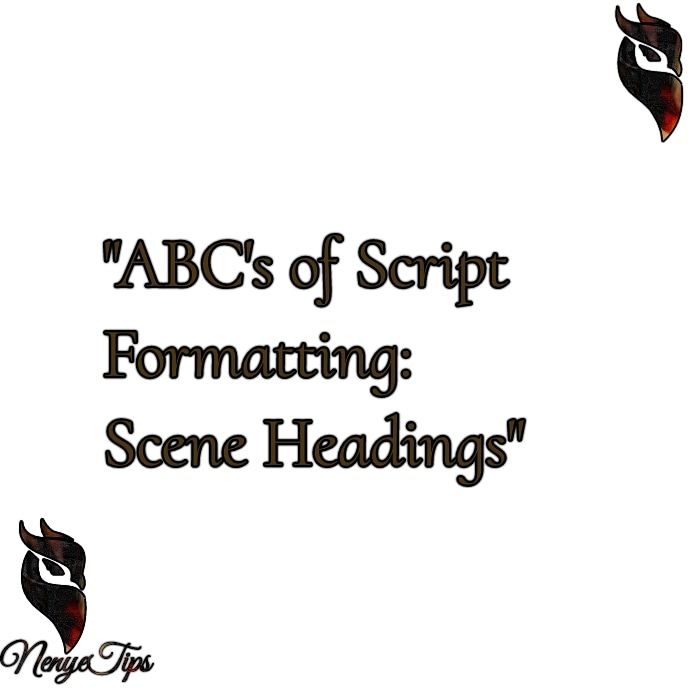The ABC's of Script Formatting: Scene Headings
The scene heading is commonly referred to as the slug line, basically the setting of the story which includes the location and the time of the day. It is essential that the slug line is specified so that the location team can set up the structure for that particular scene.
The scene heading appears like the various excerpts above and the rule is that all of the letters must be capitalised.
The INT. signifies INTERIOR, this means that the setting of the scene is the inside of a structure, same way the EXT. (EXTERIOR) signifies the scene being outside of the spot.
The next is the particular location, could be an establishment, a mall, a restaurant, bar, house, just anywhere. Just endeavour that it is indicated in the Slug line.
You can also juxta-pose both the INT. and the EXT. when the scenes happens at the exact location and both in the exterior and interior. So it comes off as indicated above.
In an instance whereby there are a lot of scenes in the structure, say for instance, the characters shuffle between rooms in a house, it should be indicated in the slug line. If it all happens at once, then there is no need to keep adding the INT. (name) HOUSE, just indicate the rooms where any scene takes place by writing just the room.
The next is the time of the day. It varies, it could be day or night. And it can also be morning, noon, dusk, evening, night. It all depends on the writer to indicate all of these in the scene headings.
“Later” can be used, when the scene takes place sometime after within the same scene, but it should be used very sparingly
#scriptwriting #screenwriting #writing #filmmaking #writersofinstagram #screenwriter #screenplay #Nollywood #NeoNollywood #NollywoodScripts #Nollywoodfilmmakers


Comments
Post a Comment